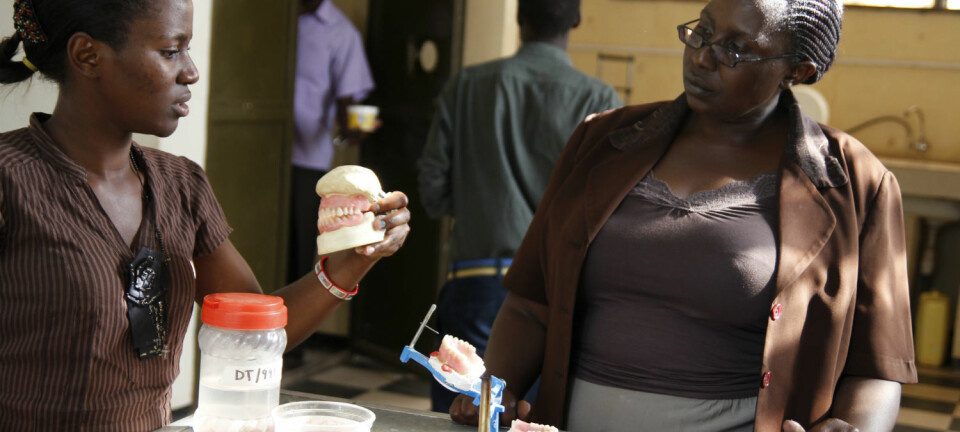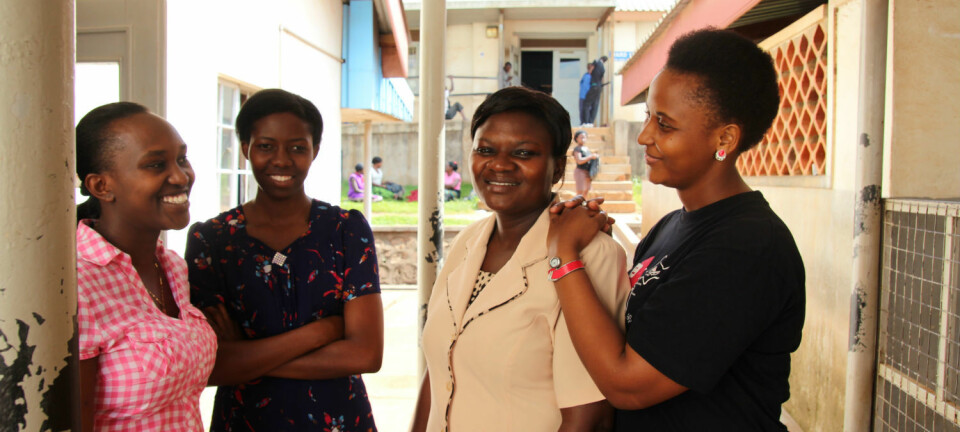
Women and men still study completely different university subjects
In the past decade few changes have occurred in the uneven gender distribution of Norwegian college and university students.
Denne artikkelen er over ti år gammel og kan inneholde utdatert informasjon.
As new first-year students stream to colleges and universities this month, many will choose their academic careers depending on whether they are a “she” or a “he”.
Today more Norwegian women than men are getting college and university educations. But men’s and women’s disparate choices of academic professions still follow old roads.
Only one in five who opts for studies in the health and social sciences fields is a man. Just one in four who works toward a degree in teaching is male.
On the other hand, only a third of those who study mathematics, natural sciences or technological fields are women.
Little has happened

No real changes have occurred in the past decade with regard to the unbalanced gender distribution amongst Norwegian students. The disproportion that was there in 2005 is just the same in 2015.
The lopsided dispersion starts at the bachelor level, spills over to the master degree level and continues among those taking PhDs.
Nine out of ten
The strongest imbalances are found among studies for degrees qualifying graduates to teach in kindergartens, preschools and elementary schools from grades one through seven.
But less than ten percent of the students are men in veterinary studies, dentistry and nutrition.
Business and economics best balanced
The best gender-balanced fields of study are in economics and administration. In 2014 these attracted 46 percent men and 54 percent women.
BI Norwegian Business School in Oslo also stands out in the Norwegian academic terrain with a near equal balance of men and women among its 20,000 students.
Bad balance in Oslo
Last year another institution of higher education with its main campus in the capital, Oslo and Akershus University College (HiOA), had 13,200 female students and 5,600 male students.
Curt Rice has recently taken over as head of the university college. The new rector also happens to be the head of a government appointed Committee for Gender Balance and Diversity in Research.
“This is a challenge we take seriously here at HiOA,” says Rice.
He refers to research conducted by Cecile Thun and Øystein Gullvåg Holter showing that a gender balance in student groups, or fields of study, is positive for the student environment and for the amount of knowledge they acquire.
The new HiOA rector is concerned about how the gender disequilibrium contributes strongly to gender-divided fields of work.
Two women for every man
The general picture among university colleges in Norway is that two out of three students are female. At some of these, such as HiOA, the unbalance is even greater.
The student populations at Norway’s eight universities consist of about 60 percent women and 40 percent men.
In addition to the business and management fields, a roughly even balance is found in the humanities and aesthetic fields such as architecture at the universities and colleges, here too about 40 percent men and 60 percent women in 2014.
In social fields like sociology and law, the gender scoresheet is 37 percent men and 63 percent women.
Gender stereotypes are strong
The gendered selections studies show that traditional conceptions and stereotypes regarding boys’ and girls’ fields of interest and work are still alive and kicking.
This indicates that boys and girls in modern Norway continue to grow up with the same expectations regarding gender roles and vocations that they had years ago.
“To change this, we have to start working toward better nuances in gender roles starting from kindergarten,” suggests the new university college rector in Oslo.
-------------------------------------
Read the Norwegian version of this article at forskning.no
Translated by: Glenn Ostling
Scientific links
- Tilstandsrapporten om høyere utdanning 2015, Ministry of Education and Research.
- Statistics from NSD (Norwegian Social Science Data Services).
- Statistics from Committee for Gender Balance and Diversity in Research.
- Thun and Gullvåg Holter: Kjønnsbalanse og læringsutbytte, 2013.



































